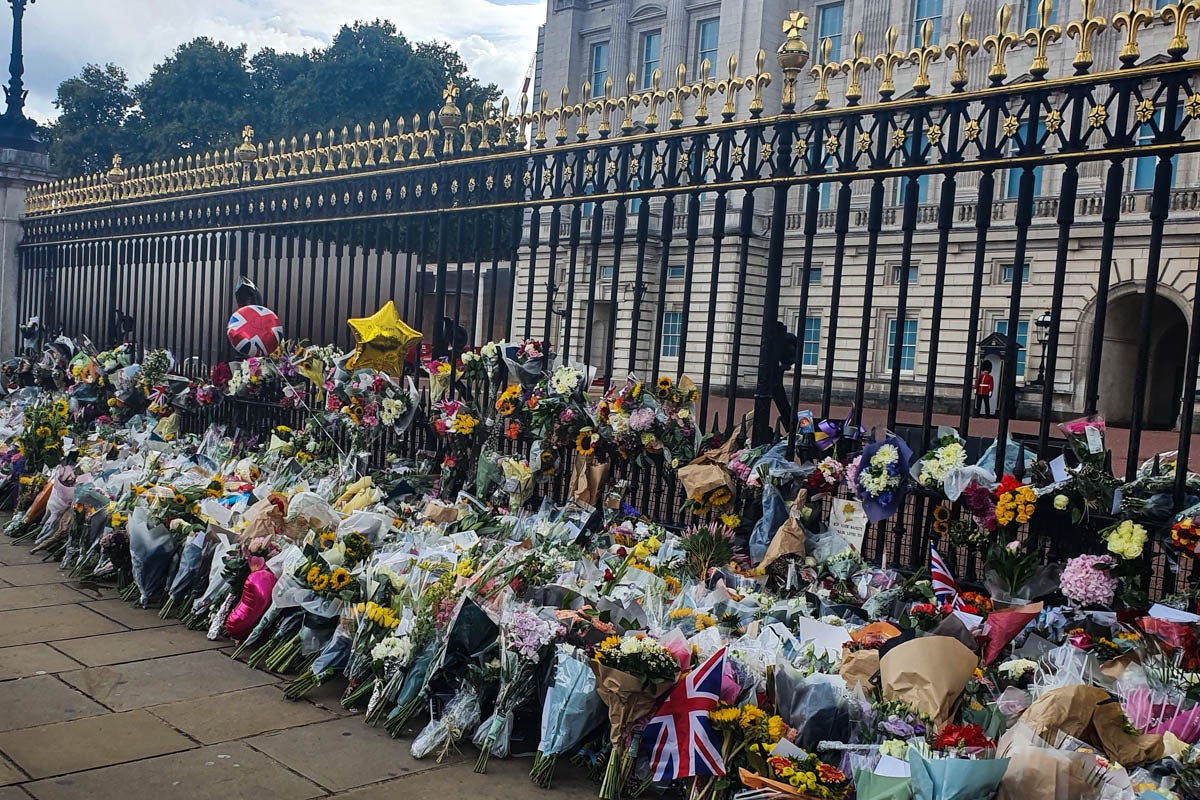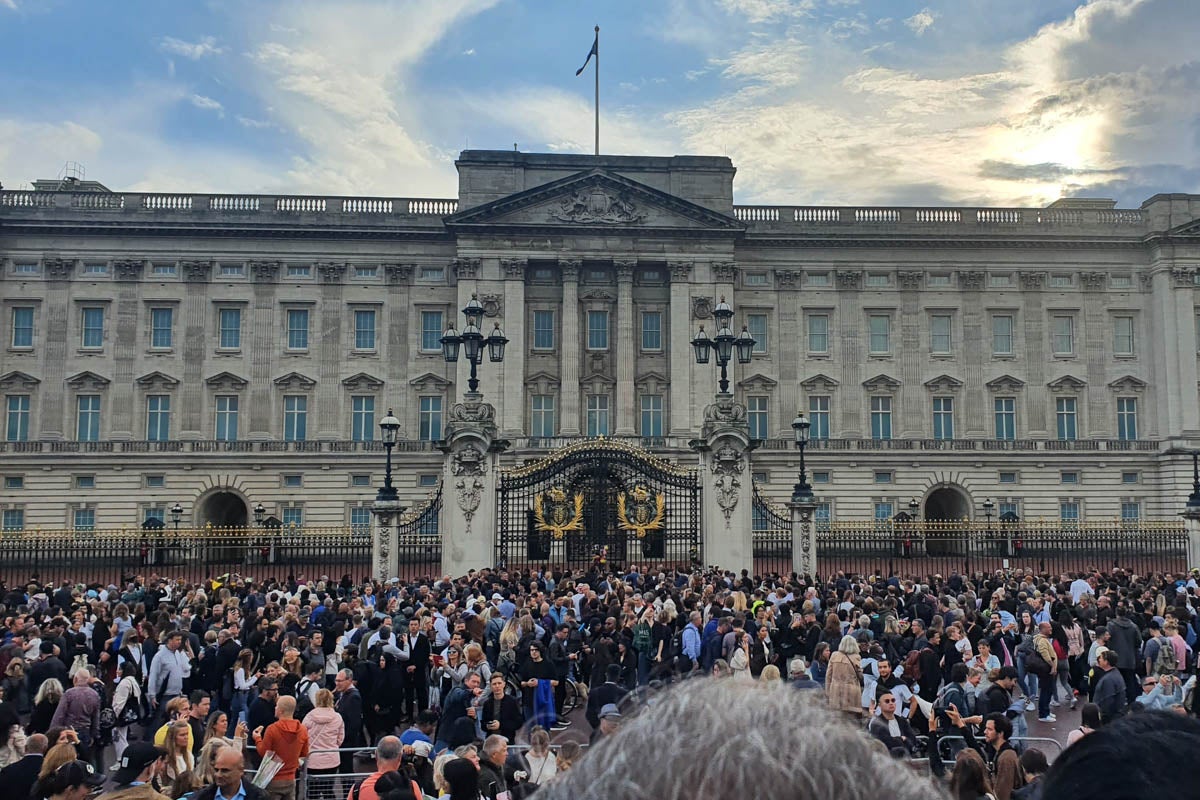When Queen Elizabeth II died Sept. 8, it marked the end of Britain’s longest-reigning monarch. At the time of her coronation in 1953, she ruled over seven independent countries, which grew to 32 nations during 70-year reign. At the time of her death, Queen Elizabeth II ruled over 15 countries in the Commonwealth and 14 additional overseas territories, which collectively are home to over 150 million people, according to Time.
“Although everyone knew this day was coming, it still came as a huge shock with an emptiness inside, more in common with a personal loss rather than the passing of a ruling monarch,” says Visit Orlando Endowed Chair of Tourism Marketing Alan Fyall, who was born in England and lived there more for than 40 years. “This is consistent with my own experience. Her loss is unexpectedly sad and emotional. Britain will be changed forever for many, myself included.”
Queen Elizabeth II’s state funeral took place today and is estimated to have been broadcasted to 4.1 billion viewers. While a much smaller number of people traveled to England for the service, Fyall suggests there will be a larger surge in visitors over the next six to twelve months.
Although there are different views on the British monarchy, especially within regions impacted by colonialism, Elizabeth II’s death is of international significance.
“She was a link to the past: the last head of state to have served in World War II, the last monarch to have known the British Empire as it was and the only monarch most Britons knew,” says Peter Larson, chair of UCF’s Department of History and an associate professor who specializes in early modern English history. “She witnessed the beginning and end of the Cold War, which dominated the second half of the twentieth century. She tried to keep pace with all the many changes, opening Buckingham Palace to visitors and permitting royal family events to be televised. She has kept the monarchy popular and kept it going despite scandals; that there is still a British monarchy has much to do with her vision.”
Here Larson shares insight on Queen Elizabeth II’s death and the future of the monarchy.
What will Queen Elizabeth II be remembered for?
In Britain, she will be remembered for her calm and dignity; she was someone all Britons could look up to, and she could be a unifying figure. She also brought the monarchy into the public eye much more. Hers was the first televised coronation and will be the first televised funeral of a monarch. Every year on Christmas Day, she gave a televised address. And we have seen much of the lives of her children and grandchildren. She also had a sense of humor, as when she had tea with Paddington Bear.
For the rest of the world, it truly varies. In the U.S., Canada, Australia and New Zealand, many will see in her as a symbol of a shared Anglophone heritage, and as a dignified ruler. But others cannot help but associate her with the British Empire and colonization, which took a huge toll in lives and wealth on many countries, such as Jamaica, India or Nigeria. For us in the U.S., it’s been more than 200 years since we rebelled against “taxation without representation” but for many people elsewhere in the world, gaining independence is still in living memory and they will know of friends or relatives who suffered under colonial rule. So they may respect her as a person, but see in all the ceremony the empire that oppressed them.
Her reign represents both tradition and change, and that can be seen in the debate over whether she was a feminist icon. Certainly she was very traditional, and she did not embrace feminism in many ways; yet her life was a model for many women. She could have let Prince Philip do more (even let him be king consort) but did not. She was a female head of state when the ideal for women was still to be a housewife and mother. She was a working mother, with her children often at home while she was on business trips.
What did her state funeral entail?
It started with a short procession from Westminster Hall to Westminster Abbey. The queen’s coffin was placed on the gun carriage again but this time is pulled by Royal Navy sailors, not horses. The path was lined by Royal Marines and Royal Navy personnel, with the procession led by a combined, interservice Pipes & Drum corps of over 200 musicians.
Much of the funeral service itself was familiar (especially to those from the Anglican or Roman Catholic traditions); it’s just that you see the Archbishop of Canterbury gave the sermon, princes and government ministers read passages from the Bible or gave personal recollections, and heads of state and VIPs were in the audience. There has not been a state funeral since 1965 (Winston Churchill). The service was “high church” so the clergy were in full regalia, and there were candles, incense, and choirs. At the end of the service was a nation-wide two minutes of silence, followed by the Queen’s Piper playing the national anthem (“God Save the King”) and some military calls.
Then the queen’s coffin was taken from the Abbey to Wellington Arch, on a horse-drawn carriage, and then driven to Windsor Castle for a committal ceremony in St. George’s Chapel (the church of the Order of the Garter). This was also televised but was much smaller. The Crown Jeweller — one of three people allowed to touch the crown — removed the crown, orb, and scepter, and then the queen’s coffin was lowered into the Royal Vault during the ceremony. There was a final, private burial ceremony later in the day when she was buried in the George VI Memorial Chapel, built and named in honor of her father. Her father, mother and sister are already buried there. Prince Philip’s coffin will be moved from its temporary resting place to be buried beside her.
At this time, many people are saying, “The queen is dead, long live the king.” What is the origin of the phrase?
The phrase dates back at least to the 1400s, in French (le roi est mort, vive le roi!), and said to announce the death of the monarch. The underlying concept — that there is always a monarch — goes back in England to at least to 1272. When King Henry III died, his son and heir Prince Edward was away on Crusade, so the Royal Council proclaimed that the throne would never be empty. The U.S. has a similar custom for the president; if the president dies or resigns, the vice president automatically becomes president.
What will this new era in Britain’s history likely look like?
It is hard to say now. With Brexit and a new prime minister there could be considerable changes in British society; the question is whether King Charles III would be associated with these changes, or would he try to be apolitical like his mother and serve as a symbol of continuity and perseverance?
Age is another factor; Charles III is 73. He could give Prince William and Princess Catherine a greater role than he himself had as Prince of Wales.
What does it mean to be a monarch in the current day?
[In England], the monarch symbolizes the kingdom as head of state and commander in chief of the British military. Much of the role is ceremonial, such as opening Parliament and granting the Royal Assent to legislation, as well as many appearances in Britain and abroad. Queen Elizabeth did this very well, on state trips, TV appearances and appearing at events.
The monarch appoints the prime minister (chosen by the ruling party) and can advise ministers and Parliament as they draft laws. Usually this is behind closed doors and the exact role of the monarch isn’t clear.
The monarch has influence in other ways. They can bestow honors such as knighthoods (no longer limited to the military — we have Sir Elton John, for instance). They and other members of the royal family hold numerous ceremonial posts, whether as chancellor of a university, colonel-in-chief of a military regiment, or as a sponsor of a group or society. They can also give a warrant to a person or company allowing them to use the royal arms or to say “by appointment to his majesty” on their products.
The king and other family members have extensive estates, which they can do with mostly as they please. As prince, Charles created an organic brand of food and other products sold throughout the country.
In your opinion, what is one of the most interesting aspects of the Queen Elizabeth II’s passing?
Something I find fascinating is how unexpectedly hard her death hit the British people. Everyone knew this was coming. She was 96, her husband died last year, and she was in declining health. But it’s been like a shockwave as people try to come to terms with it, and you can see how much the British loved and respected the queen in the outpouring of emotion, and the massive lines to walk past the queen’s coffin.





